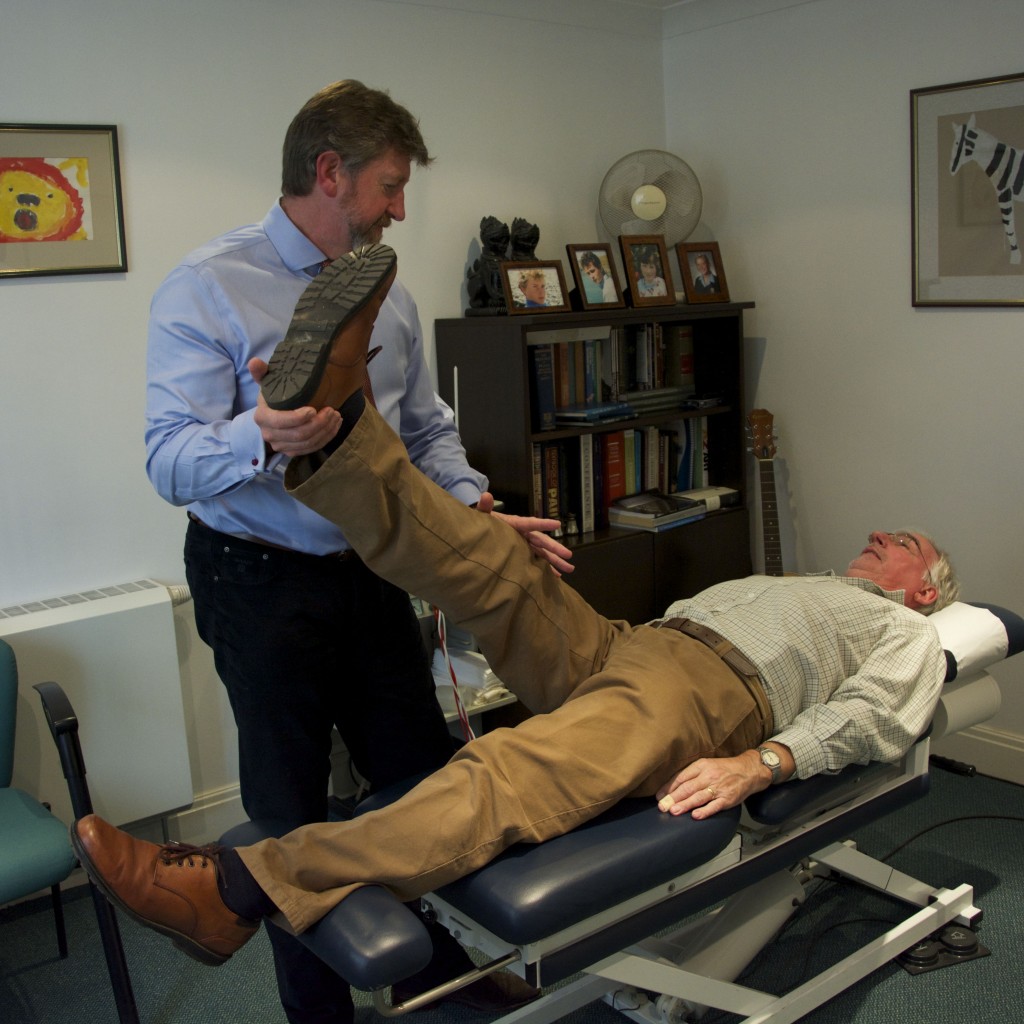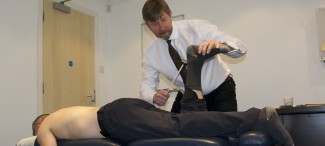Different types of pain to the leg can be identified using a combination of history and testing
Sciatica and Leg Pain
Sciatica and femoral neuralgia are types of leg pain caused by a low back problem
What is a Trapped Nerve?
The expression ‘a trapped nerve’ is often applied to any pain which is sharp, this is incorrect.
The main characteristic of a trapped nerve pain is that it affects an area away from the cause, within the skin distribution of a single nerve, or nerve root, called a ‘dermatome’. It may be a shooting pain, constant pain, tingling or numbness.
When a nerve is trapped enough it struggles to get information through, this may disrupt the reflex or cause weakness of specific muscles.
The sciatic nerve supplies the skin, muscles and other components of the buttock, back of the thigh, back and outside of the lower leg and much of the foot, it supplied by the L5 and S1 nerves. Sciatica is more common than ‘femoral neuralgia’, which affects mainly the distribution of the L4 nerve root. Sciatica and femoral neuralgia are caused by similar problems but give different distributions of pain.
Where is the Nerve Trapped?
At The Spine Team we will listen to your symptoms and your history, then we will use examination tests to identify not only which nerve, but how and where it is likely to be trapped.
Nerve Trapped Inside the Spine

Although “slipped disc” is a widely used term a disc ‘herniation’ or ‘prolapse’ is a relatively uncommon condition accounting for only about 2% of back problems. These terms should not be confused with a ‘degenerative disc’ which is common and a type of ‘normal’ wear and tear, not necessarily associated with pain.
A disc injury inside the spine is difficult to get at and treatment plans will be very different from those where the nerve is irritated as it exits the spine.
If a problem inside the spine is suspected it can take time to heal and your options will be discussed giving a clear idea of what might be the best thing for you, this may include treatment, but we will also discuss imaging using scans and referral out to see a surgeon.
Nerve Trapped as it Exits the Spine
The nerves leave the spine through a ‘tunnel’ (the intervertebral foramen or IVF) behind the disc and in front of the ‘facet joint’. The facet joint is implicated in mechanical back pain.
Most patients with lower back and leg pain do not have a disc prolapse but have mechanical back pain around the facet joint, close to, and affecting, the emerging nerve. This can cause low back and leg pain within the distribution of that nerve.
Mechanical back pain causing nerve pain to the leg can be treated at the Spine Team using similar methods to other types of back pain.
Deep Referred Pain
Back related leg pain where the nerve itself is not trapped is called ‘deep referred pain’. This pain does not follow the skin dermatome of a single nerve but rather patterns within the muscles, joints and bones giving, as the name suggests, deep pain. This type of pain can be more constant and hard to control, it is often worse on holding one position rather than worse on activity.
Your Spine Team practitioner will be able to help you understand this type of pain which usually requires you to change the way you use the area rather than just have the problem fixed; this may be due to a particular set of circumstances, a postural weakness or an environmental or workplace habit or activity. The body can ‘learn’ this pain increasing the likelihood that it can develop into chronic pain.
Mechanical back pain with deep referred pain can be treated at the Spine Team once the cause has been identified, your Spine Team practitioner will explain this after your first visit.


Once the cause of the leg pain is identified the most appropriate plan can be discussed
